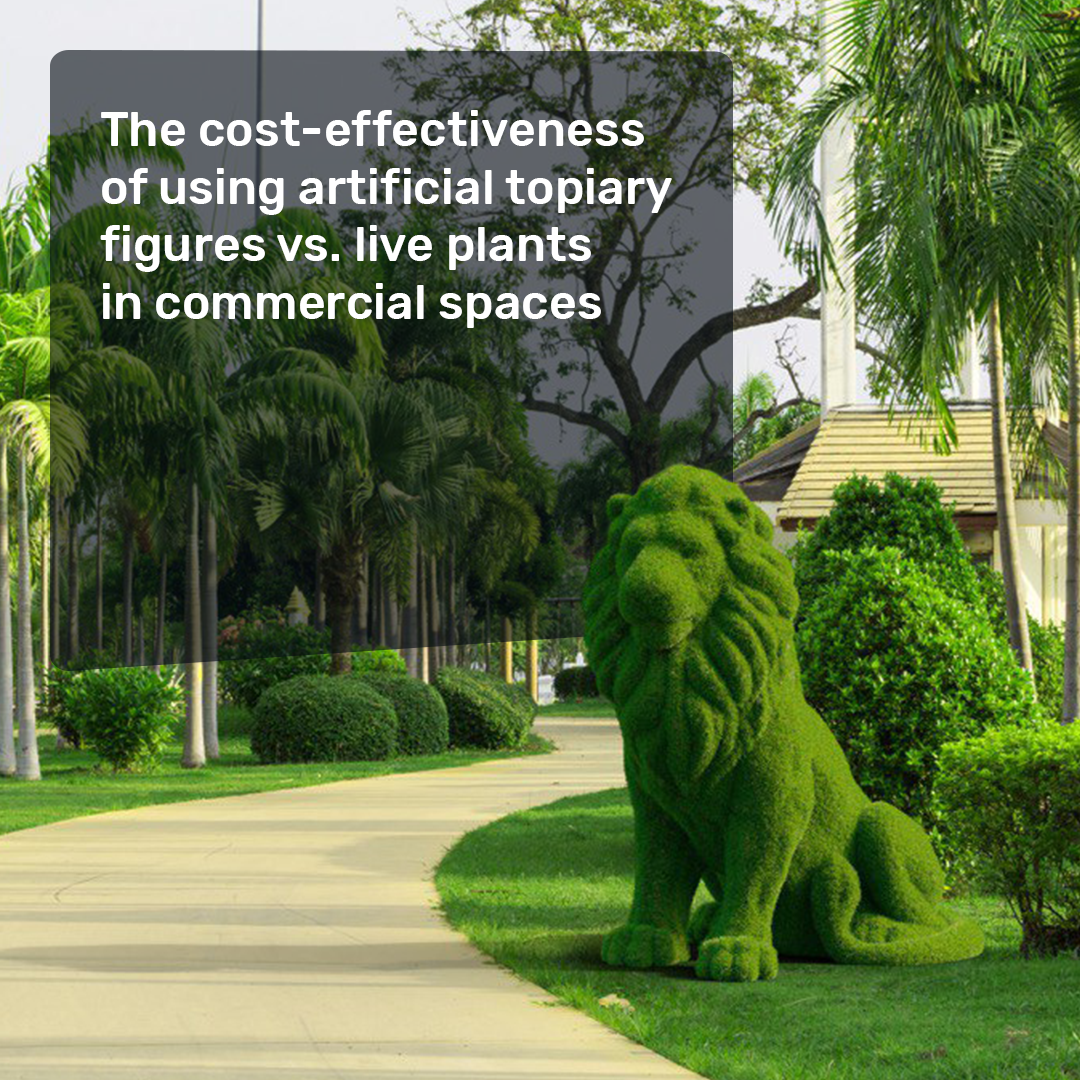Topiary figures can add a touch of elegance and greenery to commercial spaces, creating a visually appealing atmosphere for customers and employees alike. When deciding between artificial and natural topiary figures, it is essential to consider the cost-effectiveness of each option.
Initial Costs:
Artificial topiary figures generally have a higher upfront cost, starting from €1000 to €5000 or more, depending on the size, complexity, and quality of the figure. Natural topiaries, on the other hand, are typically less expensive upfront, with prices also dependent on the size, plant species, and design complexity. However, natural topiaries may require additional investments in tools, soil, and other materials for proper care.
Maintenance:
Artificial topiaries offer the advantage of low maintenance, requiring only occasional dusting or cleaning to keep them looking fresh. Natural topiaries, conversely, demand ongoing care and attention, including watering, fertilizing, and regular pruning to maintain their shape. This labor-intensive process can lead to additional costs if professional gardening services are needed. For instance, maintaining a 1.5-meter natural topiary could cost about €1000 annually.
Another notable advantage of artificial topiary figures is their ability to achieve large sizes and complex forms that may be impossible or extremely challenging to create with live plants. Advances in materials and manufacturing techniques have allowed for the production of highly realistic and intricate artificial topiaries that can serve as eye-catching centerpieces in commercial spaces. These elaborate designs can make a bold statement, providing a unique visual appeal without the constraints and limitations associated with live plant growth and care.
Lifespan:
High-quality artificial topiaries can last for several years, with UV-resistant materials preventing fading due to sunlight. Natural topiaries, while potentially living for many years with proper care, are more susceptible to diseases, pests, and weather-related damage, which can shorten their lifespan and necessitate further investment in treatment or replacement.
Initial Costs:
Artificial topiary figures generally have a higher upfront cost, starting from €1000 to €5000 or more, depending on the size, complexity, and quality of the figure. Natural topiaries, on the other hand, are typically less expensive upfront, with prices also dependent on the size, plant species, and design complexity. However, natural topiaries may require additional investments in tools, soil, and other materials for proper care.
Maintenance:
Artificial topiaries offer the advantage of low maintenance, requiring only occasional dusting or cleaning to keep them looking fresh. Natural topiaries, conversely, demand ongoing care and attention, including watering, fertilizing, and regular pruning to maintain their shape. This labor-intensive process can lead to additional costs if professional gardening services are needed. For instance, maintaining a 1.5-meter natural topiary could cost about €1000 annually.
Another notable advantage of artificial topiary figures is their ability to achieve large sizes and complex forms that may be impossible or extremely challenging to create with live plants. Advances in materials and manufacturing techniques have allowed for the production of highly realistic and intricate artificial topiaries that can serve as eye-catching centerpieces in commercial spaces. These elaborate designs can make a bold statement, providing a unique visual appeal without the constraints and limitations associated with live plant growth and care.
Lifespan:
High-quality artificial topiaries can last for several years, with UV-resistant materials preventing fading due to sunlight. Natural topiaries, while potentially living for many years with proper care, are more susceptible to diseases, pests, and weather-related damage, which can shorten their lifespan and necessitate further investment in treatment or replacement.
